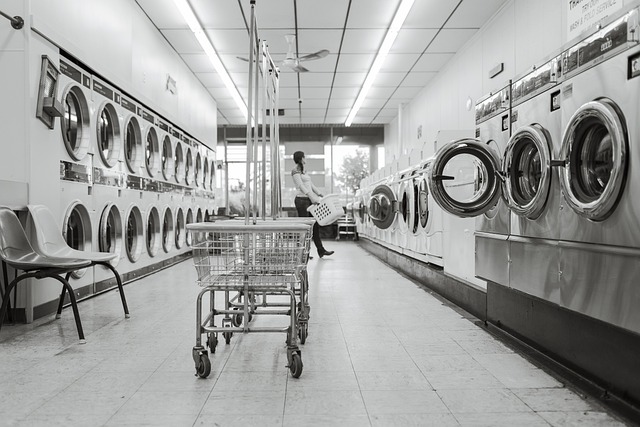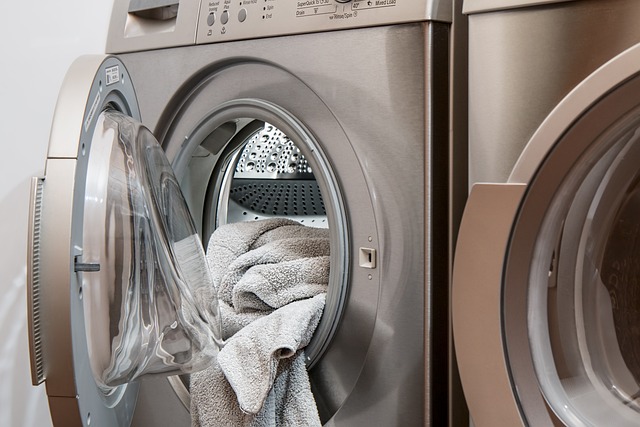
How much does it cost to open a laundromat? It is very common for entrepreneurs to spend 200000 to 500000 dollars to open a medium-sized laundromat whether they are creating a new enterprise or acquiring an old company.
Whatever our differences, we can all agree that wearing clean clothes is a necessity. That’s probably why coin laundromats can generate anywhere from $15,000 to $300,000 in annual cash flow. For many entrepreneurs, starting a laundry business is an attractive idea. When everything is set up and operating smoothly, you are providing a service that is in high demand and can create a flexible work-life balance.
You will need a financial runway to start your business, though, just like any other business. A laundromat needs to be able to afford the initial startup costs as well as ongoing costs on a monthly basis. Knowing what to expect can help you create the strongest business plan possible to give your new business the best chance of success.
Table of Contents
Laundromat Business
The laundromat business model is simple: customers come here to wash their clothing. Laundromats are a common sight in the neighborhood, catering primarily to lower-income renters who might not have washers and dryers at home. In fact, 87% of patrons live less than a mile from the nearest laundromat.
Businesses that operate laundromats have a success rate of 94.8% and an ROI (return on investment) of 20 to 35 percent, generating a gross income of $30,001 to $1,000,000 annually.
How Much Does It Cost to Open a Laundromat?
Entrepreneurs frequently invest between $200,000 and $500,000 to open an average-sized laundromat, regardless of whether they are starting a brand-new business or purchasing an existing one.
The amount of money you’ll need to start a laundromat depends entirely on the kind of laundry business you’re starting. Are you going to start your own company from scratch or will you buy an already running one? Another choice is to invest in a franchise for a laundromat.
It does have advantages to buy an existing company. You might be able to avoid the growing pains of opening a brand-new business by moving into a laundromat that is already operating effectively. Additionally, it might come with built-in customer loyalty.
Many of the major players in this market have minimal liquid cash requirements ranging from $75,000 to $300,000. If choosing the franchise route, these amounts are common. The biggest advantage of investing in a franchise is that you can probably rely on the franchisor for support and advice with your business. Additionally, you’ll have a well-known company name on your storefront.
How much does it therefore cost to open a laundromat? The following costs should be anticipated by those starting their own business.
Property for Your Laundromat
A laundromat requires a physical location in which to operate. Finding the appropriate neighborhood must come before discussing the price. Choosing a business location that’s rich in apartment buildings is a good place to start as these residents are less likely to have washers and dryers in their homes. Being close by could give you a competitive advantage over others.
Speaking of, prior to beginning a new business venture, it always pays to conduct some basic market research. Analyze the number of existing laundries in the area. A thorough market analysis’s objective is to uncover insightful information and determine whether there is a genuine market need that your new laundromat will satisfy. We bring all of this up because skipping over these precautions might result in opening a business in an unprofitable location.
Once you have a positive impression of the area, it is time to look for a working space. Depending on the market, there are many different price points for renting a commercial space. Opening a laundromat in a city with a high cost of living, like San Francisco, will result in significantly higher monthly rent. Therefore, your biggest investment will probably be in the space you select.
Utilities
The biggest recurring costs in a laundromat, which range from $4,000 to $8,500 per month, are hot water and electricity. You might also be required to pay sewer connection fees, also known as tap fees, depending on the area.
To protect yourself in the event that a customer trips or equipment malfunctions, you should also think about getting insurance. Most of your bases will be covered by general liability insurance. This covers harm to people or property and even harm to advertising. For up to $1 million in coverage, this type of insurance costs between $350 and 750 per year.
Payment system
When opening a laundromat, coin laundry equipment is typically purchased and installed. They provide a great deal of assistance with payment collection. However, given that more people are using cards to make even small purchases, you might also consider setting up a card reader system. This will enable your clients to use their laundry card whenever they run out of change, much like a credit card. Card readers for laundromats can set you back $40-800.00.
The other choice is to install a bill-to-coin changer, which can cost between $800 and $7,000. Always keep in mind that your target market is more likely to visit your establishment than others if you provide them with a variety of payment options. Nowadays, convenience is a big deal, and as our society becomes more digital, fewer people carry cash. As a result, you have a better chance of retaining your target market’s business in the long run if you can offer them options.

The Right Equipment
The obvious cost is for washers and dryers right now. You may need to spend up to $1,000 on top-loading commercial washing machines. Dryers can cost several thousand dollars, and front-loading models typically range from $700 to $2,000 in price.
Just keep in mind that installing a card system (instead of conventional coin laundries) could cost at least $40,000. But there are some problems with this. Some might contend that increased sales could result from customers’ convenience in using credit or debit cards. You could also use a machine that converts bills to coins. Commercial properties range in price from $800 to $7,000. In addition to all of this, you’ll require a water heating system that can handle your volume of business and is of commercial grade. The cost depends on the type you select, but some models can run into the tens of thousands of dollars.
Some other costs to factor into your planning include:
Laundry detergent.
Fabric softener.
Laundry carts.
Furniture.
items for your office (a computer, accounting software, etc.).
Business Insurance
There are many different types and sizes of business insurance, but they all share the goal of protecting small business owners. You expose yourself to some level of risk when you open your doors to the public. Your insurance coverage could make a difference in how well you recover financially whether a client slips and falls in your laundromat or a tropical storm breaks your windows.
The kind of insurance coverage you select will determine how much you pay in premiums. You might be required to pay for workers’ compensation insurance and unemployment insurance if you have any employees on your payroll. Commercial property insurance typically costs $1,000 to $2,000 per year and covers theft, vandalism, fire, and some weather-related property damage.
Marketing and Advertising
It’s simple to forget about marketing when creating your small business budget, but it definitely merits your focus. Building a company that endures over time requires attracting and keeping customers. If your revenue is less than $5 million and your net profit margin is between 10% and 12%, the Small Business Administration advises allocating 7% to 8% of your gross revenue to marketing and advertising.
A customized marketing strategy for your laundromat should be created first. The objective is to appeal to your target audience, and there are numerous ways to do this. Possibilities for generating new business include print advertisements, social media marketing, radio advertisements, and neighborhood billboards. Just remember to keep an eye on the success of your marketing strategy along the way and make necessary adjustments. You might find that some forms of advertising are more effective than others.
Another strategy to keep repeat customers coming back is to establish a rewards program for them. They might be more likely to choose you over a rival if you offer a free wash and fold after a certain number of visits.
Set Up Your Business Structure
Choosing your business structure is a necessary step before you start the legal aspects of owning a laundromat. There are four main structures:
- Sole proprietorship
- Limited Liability Partnership(LLP)
- Limited Liability Company(LLC)
- Corporation
Remember that if you own your business as a sole proprietor, there is no legal separation between you and it. An LLC can offer the most protection for most small businesses, ensuring that you won’t be held personally responsible if your laundromat is sued.
Write a Business Plan
A typical business plan includes an overview of what your company is and does, a market analysis of how you stack up against rivals, an overview of your company’s organizational structure, your marketing strategy, and, of course, your budget. In addition to giving your business a clear road map, this will inspire confidence in investors.
Marketing and Advertising
Think about the brand and concept of your business. Will it be a 24-hour laundromat or only open during the day? Will it be completely self-service, with no attendants at all, or will it offer full service (you do the washing, drying, and folding)? Will it be a hybrid design, like a cafe and laundromat? This will determine how you advertise your new company and who your target market is.
You should let people know you are there, in any case. Install readable signage and add your company to Google Maps. Additionally, you can distribute business cards, post flyers nearby, and advertise on social media.
Get Funding
Now that you have your concept and business plan, it’s time to get your startup funding! There are a number of options available to you.
Funding options
- Traditional Commercial Loan
When you obtain a traditional commercial loan from a bank, the bank will loan you money in return for collateral (such as real estate or equipment), which it will seize in the event of bankruptcy. Commercial loans typically have a fixed amount and are used for short-term funding, like startup costs.
- Business Line of Credit
If you need access to a set amount of money at any time, a business line of credit (LOC) provides it. It is somewhat similar to a credit card. You can take out a loan against your line of credit to pay for transient business expenses, such as inventory, maintenance, supplies) and pay it back with interest on just the amount you’ve borrowed.
- Small Business Loan
Banks will be more inclined to lend to you because the Small Business Administration (SBA) can guarantee a sizable portion of your bank loan. Be aware that the SBA has additional requirements in addition to those for standard bank loans, and that the application process can take some time.
- Investors
Numerous business owners look for investors to aid in financing their small enterprises. Often, investors will receive a stake in your business in exchange for their financial support. You can find investors through crowdfunding, social media, or your personal network of friends and family.
Laundromat Profit Margin
The laundromat industry has a success rate of 94.8% and a return on investment (ROI) range of 20 to 35%. With a profit margin of 20% to 35%, success is all but guaranteed. In comparison to other industries, you get $200–$350 in profit for every $1000 invested. And it clarifies the reason why coin laundry businesses produce between $15,000 and $300,000 in cash flow annually.
Increased laundromat profit margins are difficult to achieve. One option is to switch to a 24-hour schedule so that people who work during the day can still do their laundry at night. Of course, that means more money for you. Alternatively, you might work for 24 hours on Fridays and weekends and 12 hours on the other days.
Your choice of business model may ultimately depend on how many employees you have to run the company for a long period of time. Speaking of which, only two people work in 70% of laundromats. The business doesn’t rely heavily on human resources, which is good for your profit margin. You only need to market it effectively to attract the right audience.
Renters with low incomes are typically the biggest customers of successful coin laundries. 87% of customers live within a mile away from the laundromat and 90% of them will become repeat customers. In addition, women make up 60% of laundromat patrons, with men constituting the remainder. Therefore, be sure to take these values into account when developing a marketing strategy for your laundromat, whether it is new or already exists. Further investigation into the demographics of those who use laundromats is also advised because doing so will help you better understand your target market, which is crucial when developing a marketing strategy.
Remember, in the digital age we live in, businesses, regardless of the type of business and business model are successful, not only because they offer excellent products and services, but also because they have strategical digital marketing techniques and online branding.
How much does a load of laundry at a laundromat cost?
You might be wondering how much to charge per load of laundry if you’re brand-new to the laundromat industry. The average cost for a load of laundry (washing and drying) ranges from $2.50 to $10. At $6.20, the national average.
The capacity and water temperature of the washing machine both affect price. The price of a machine increases with its size. The cost of doing laundry also increases with the water’s temperature. You can charge anywhere between $1.50 and $3.00 for extra services like folding, ironing, and delivery.
Laundromat financing: how to get a business loan for a laundromat
The next step is figuring out how to finance the startup after calculating your laundromat startup costs and your potential revenue. You’ll be relieved to learn that there are other options besides using personal savings, even though it is a real possibility. Equipment financing and small business loans are your best options. Both options are reasonable because neither involves losing any equity nor bringing in investors.
FAQs
How Much Does a Laundromat Make a Year?
According to the Coin Laundry Association, a laundromat’s average annual gross income in the USA ranges widely from $30,000 to over $1 million. At the higher end, after expenses are taken into account, net profits may reach $350,000 annually.
Is Owning a Laundromat Worth It?
The laundromat industry is very stable, does not change with the seasons or recessions, and has quick payment turnaround times. The likelihood of a 20–35% ROI (return on investment) depends on how well you maintain the laundromat’s cleanliness, the efficiency of the machines, and the quality of your customer service.
Can You Get Rich Owning a Laundromat?
Despite the significant upfront cost, once your business is up and running, you can anticipate earning up to $350,000 per year, much of it through passive income.
Final Thoughts
Whatever path you choose, starting a new business can be a thrilling new adventure. You will first need the money to pay for a location to house your business if you are serious about opening a laundry mat in your community. However, if you are unable to make a down payment, there are many funding options available.
You’ll additionally need to set up operational accounts for your company. And in this situation, the Nearside debit card might be useful. The Nearside debit card eliminates the majority of banking fees and charges that reduce small business profits by having no monthly fees, no minimum deposit requirements, and no NSF fees. Additionally, it offers 2.2% cash back on every purchase, ensuring that you always make more money when you invest in laundry supplies and equipment.
Related:






